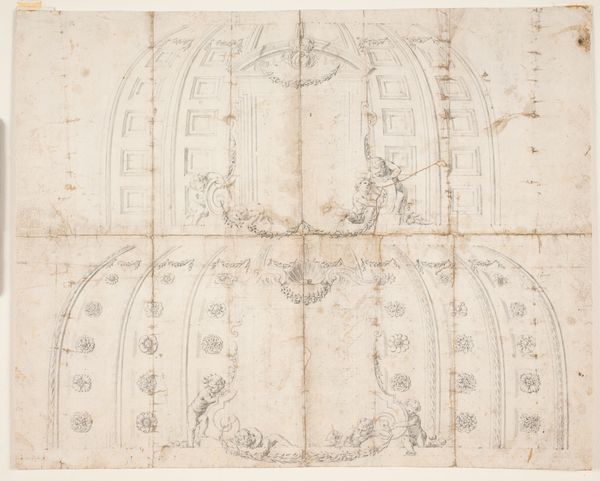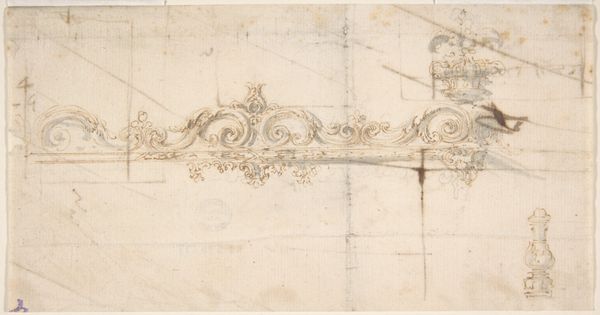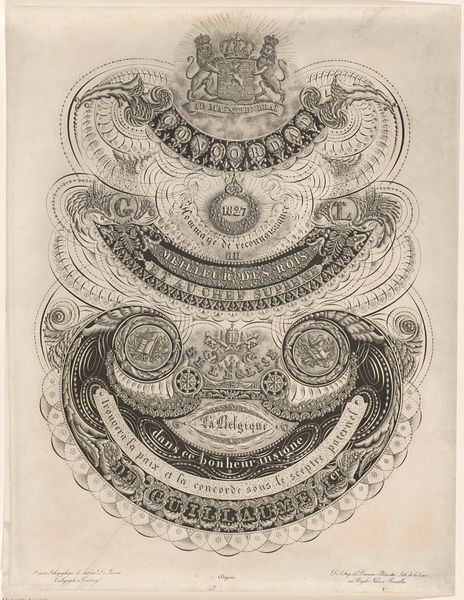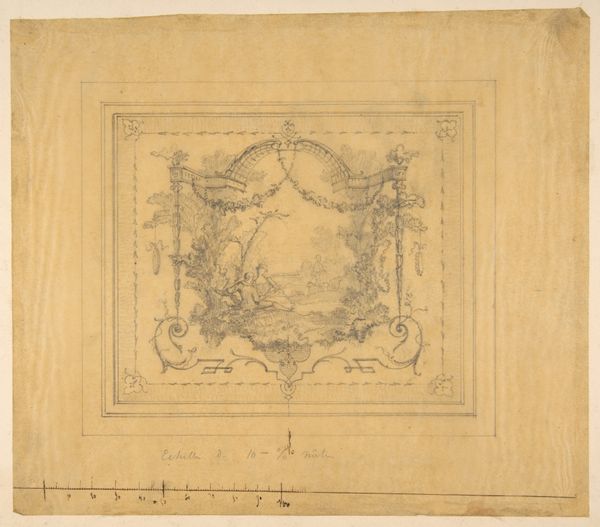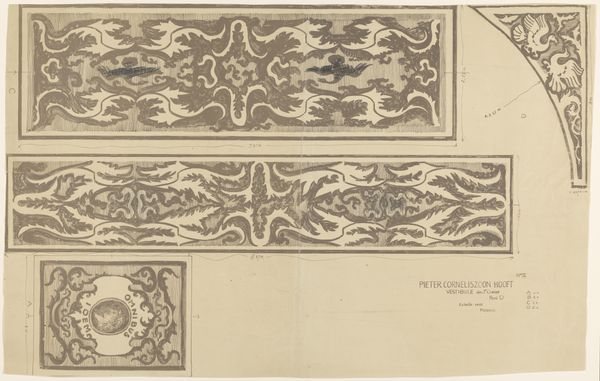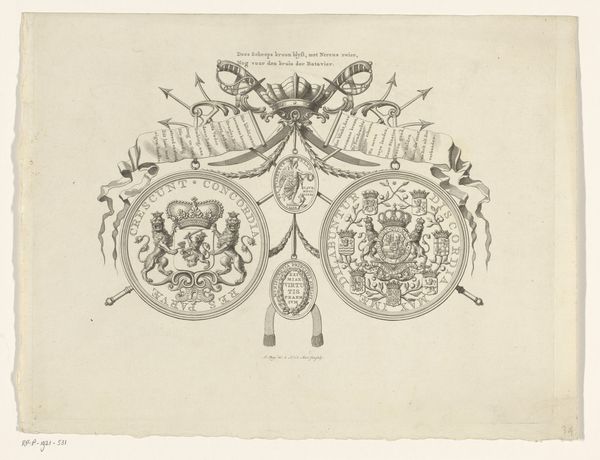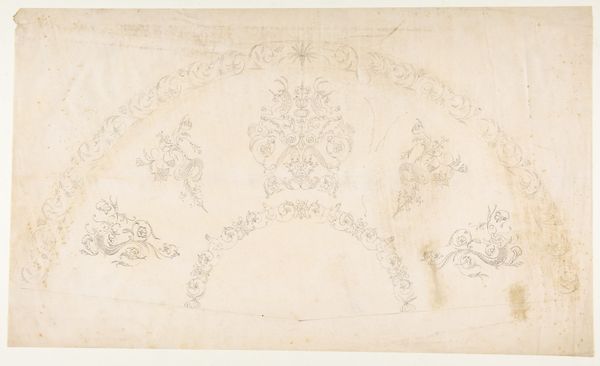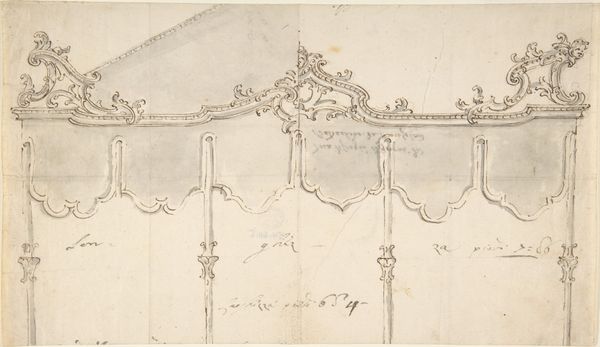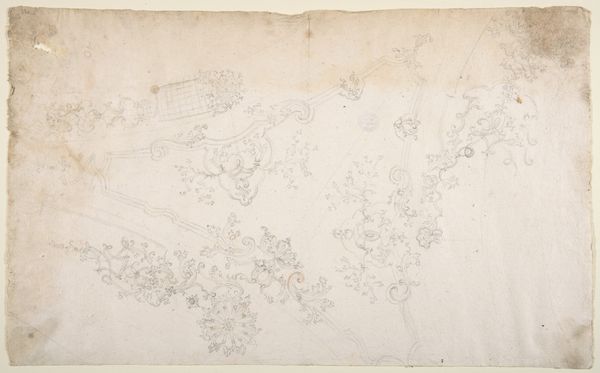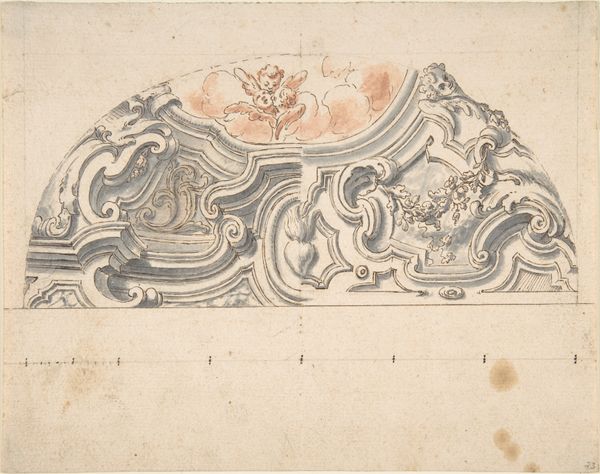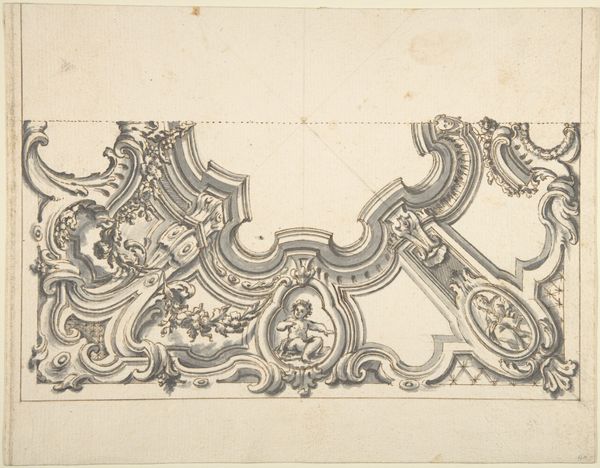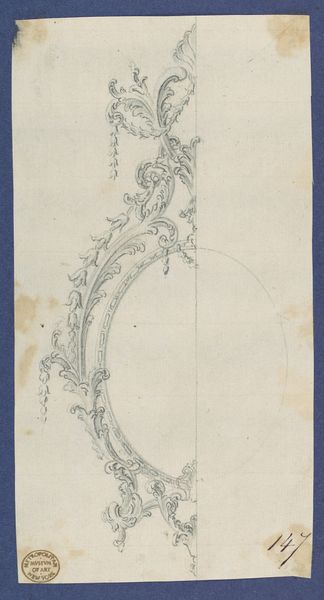
Design for a Silver Chandelier with Two Variants 1737 - 1747
0:00
0:00
drawing, ink
#
drawing
#
baroque
#
ink
#
decorative-art
Dimensions: 21 3/4 × 30 5/8 in. (55.3 × 77.8 cm)
Copyright: Public Domain
George Wickes designed this silver chandelier with two variants in the 18th century, using pen and brown ink on paper. The drawing presents a symmetrical, skeletal view of a chandelier, with its elegant curves, ornate embellishments, and balanced composition. The use of line in the design is particularly striking; it not only defines the form but also suggests the play of light on the chandelier’s metallic surfaces. The visual structure mirrors the socio-cultural context of its time. The chandelier, an object of luxury, is envisioned as a symbol of wealth. Note how the design includes a crown, a coded element that reinforces hierarchical power structures. Such designs served as vital links between the artisan's imagination and the tangible manifestation of elite status. The symmetrical balance of Wickes's design speaks to the Enlightenment's emphasis on reason, order, and controlled elegance. Consider how Wickes balances aesthetic appeal and a silent discourse on value, class and power.
Comments
No comments
Be the first to comment and join the conversation on the ultimate creative platform.
